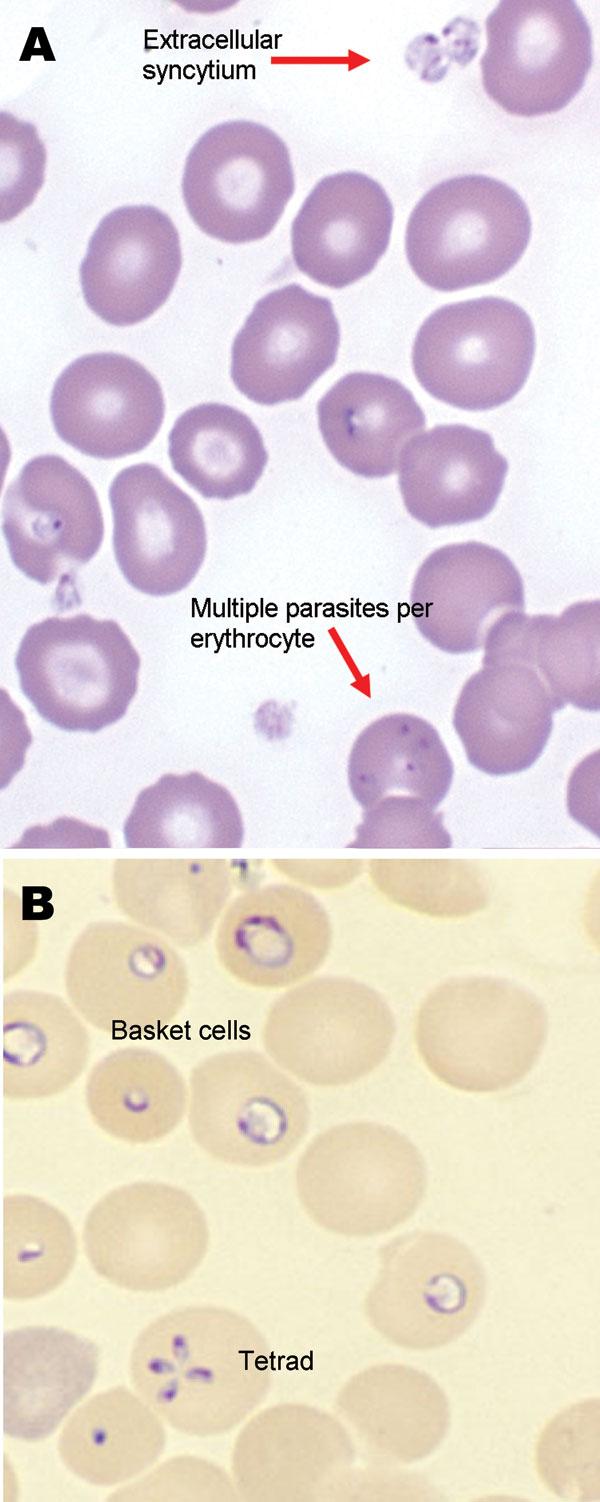Volume 15, Number 5—May 2009
Dispatch
Probable Congenital Babesiosis in Infant, New Jersey, USA
Figure

Figure. Giemsa-stained (A) and Wright-stained (B) peripheral blood smear from a newborn with probable Babesia microti infection. Parasitemia was estimated in this newborn at ≈15% based on the number of parasites per 200 leukocytes counted. The smear demonstrated thrombocytopenia and parasites of variable size and morphologic appearance and an absence of pigment. Magnification ×1,000.
Page created: December 16, 2010
Page updated: December 16, 2010
Page reviewed: December 16, 2010
The conclusions, findings, and opinions expressed by authors contributing to this journal do not necessarily reflect the official position of the U.S. Department of Health and Human Services, the Public Health Service, the Centers for Disease Control and Prevention, or the authors' affiliated institutions. Use of trade names is for identification only and does not imply endorsement by any of the groups named above.